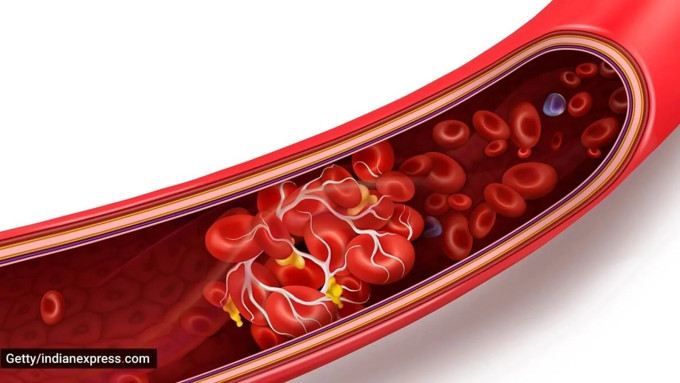Answered: On what basis your left (or right) arm is chosen for blood donation
After getting an answer to why a particular arm is chosen (over the other) to administer vaccines, we wondered if the same logic applies when donating blood. This query made us reach out to experts who explained the reason behind the choice of arm, and whether it makes any difference to the blood donated.
When donating blood, you can generally use either arm. But “most people use their non-dominant arm for a few practical reasons,” said Dr Aklesh Tandekar, head consultant critical care, Wockhardt Hospitals Mira Road.

In simple words, this means that if a person is right-handed, the lab technician would choose the left arm for blood donation, and if a person is left-handed, the technician would likely choose the right arm. According to Dr Dr Tandekar, this practice is followed to minimise the risk of complications and to ensure that the patient’s dominant arm is not affected, especially if multiple blood draws are needed.
“Choose the arm that feels more comfortable and relaxed during the donation. This will help you maintain a steady position throughout the process, making it easier for the phlebotomist (blood collection specialist) to find a vein,” said Dr (Brig.) Anil Khetarpal, deputy chief, medical services and chairperson, department of blood centre and transfusion medicine, Artemis Hospitals.
According to Dr Tandekar, these reasons range from
*Activity level: Using the non-dominant arm helps avoid discomfort or inconvenience in daily activities post-donation.
*Recovery: Any bruising or soreness will be less disruptive if it occurs in the non-dominant arm.
*Vein suitability: The nurse or phlebotomist will examine both arms to determine which has the better vein for donation.
“Sometimes, one arm may have more prominent veins or better access,” said Dr Tandekar. “They are trained professionals and prioritise comfort and efficiency during the process,” added Dr (Brig) Khetarpal.
If one arm is affected by an injury or condition, the other will be utilised. “Alternating arms can occasionally aid with vein healing. The decision will ultimately be based on the phlebotomist’s assessment and the arm with the best veins is chosen,” said Dr Meet Kumar, clinical director, haematology and bone marrow transplant, Marengo Asia Hospitals, Gurugram.
 The nurse or phlebotomist will examine both arms to determine which has the better vein for donation (Source: Getty Images/Thinkstock)
The nurse or phlebotomist will examine both arms to determine which has the better vein for donation (Source: Getty Images/Thinkstock)
Does the choice of arm impact the blood donation process?
In most cases, the arm you donate blood from doesn’t significantly impact the donation process, emphasised Dr (Brig) Khetarpal. “If you have a history of successful donations from a particular arm, you can mention it to the phlebotomist,” mentioned Dr (Brig) Khetarpal.
“There’s no specific science dictating that one arm is better than the other for health reasons; it mostly comes down to practicality and vein accessibility,” concluded Dr Tandekar.
📣 For more lifestyle news, click here to join our WhatsApp Channel and also follow us on Instagram
Disclaimer: The copyright of this article belongs to the original author. Reposting this article is solely for the purpose of information dissemination and does not constitute any investment advice. If there is any infringement, please contact us immediately. We will make corrections or deletions as necessary. Thank you.
